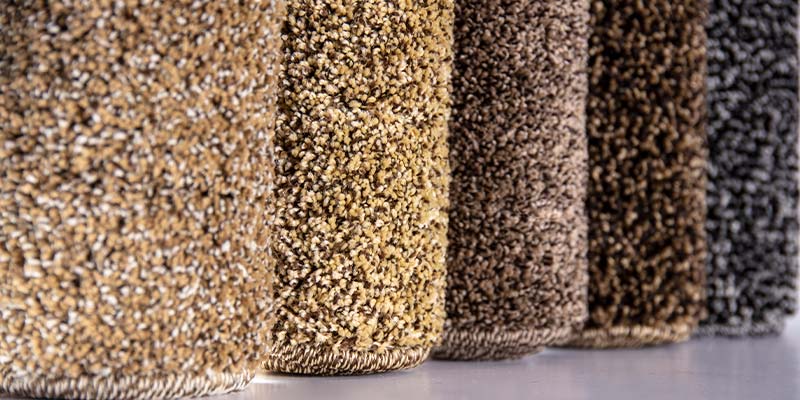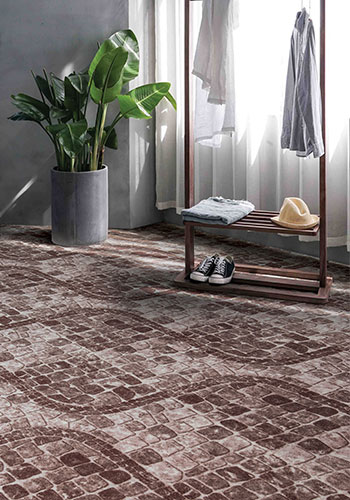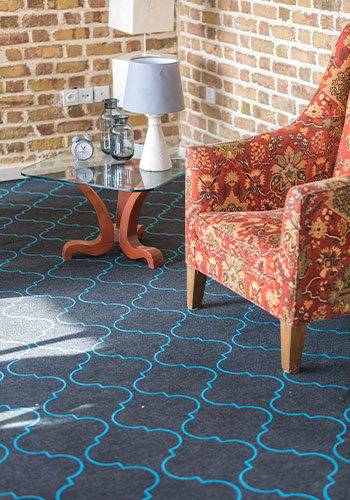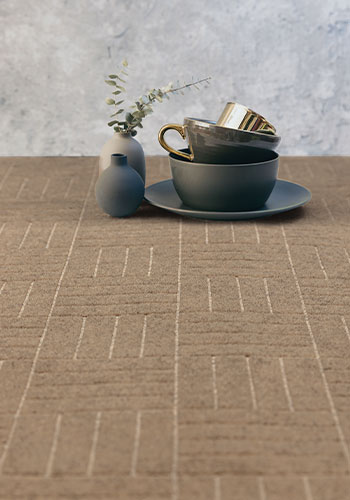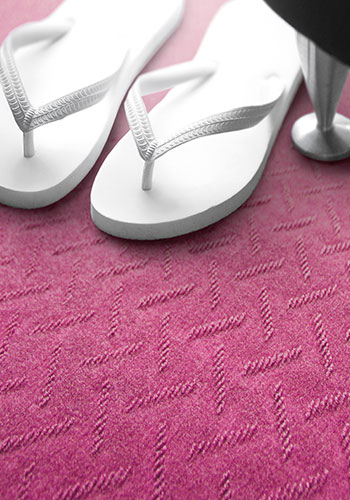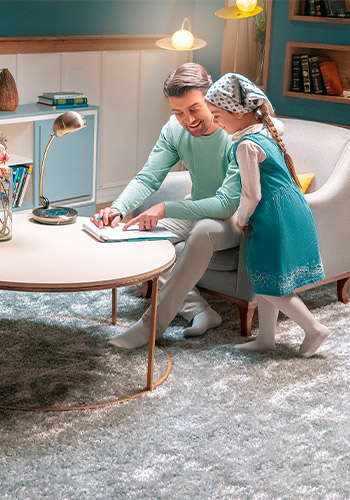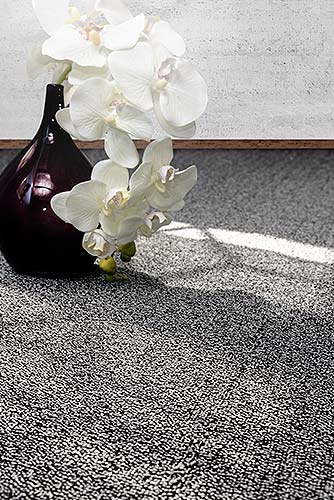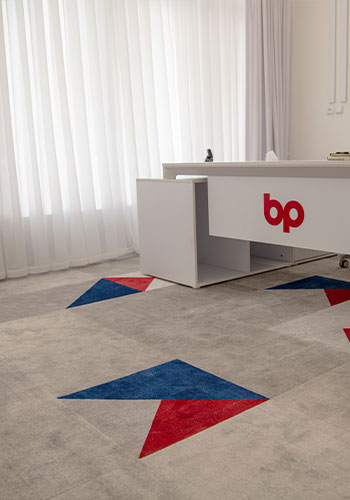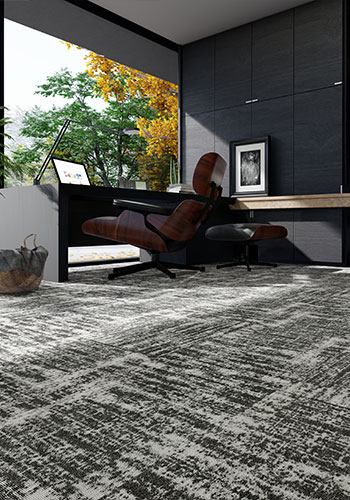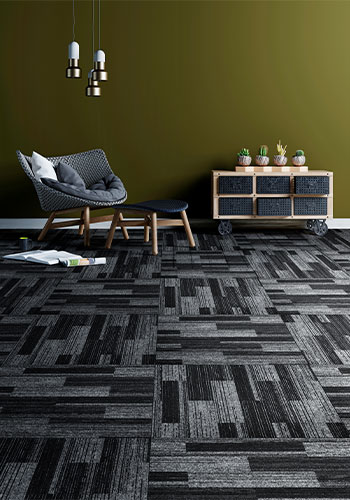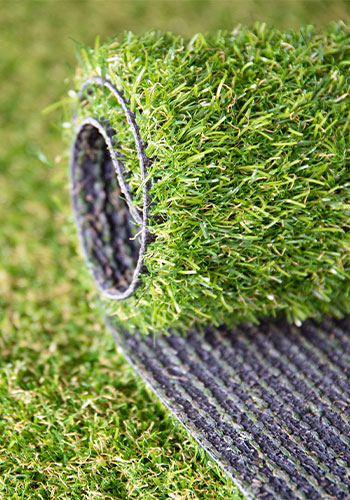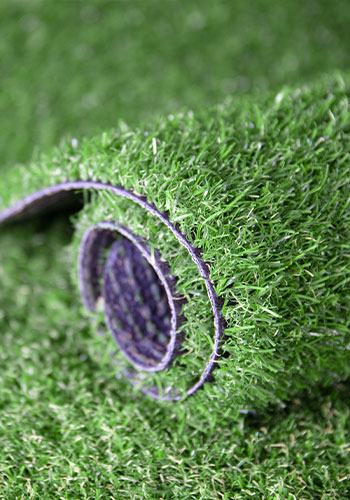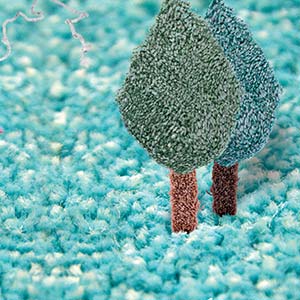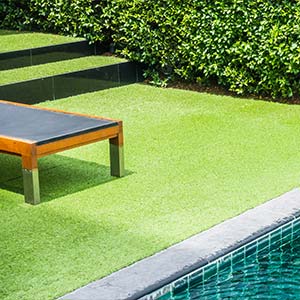This article will specifically focus on Types of Wall-to-wall Carpet and is part of Zarif Carpets‘ collection of articles related to wall-to-wall carpets. Discover more articles related to the subject on our ‘All About Wall-to-wall Carpet‘ page.
If you are not familiar with the topic of wall-to-wall carpets, we recommend checking out our guide ‘Wall-to-wall Carpets: What You Should Know‘ first.
What Is Wall-to-wall Carpet?
Wall-to-wall carpet, also known as Fitted Carpet or Moquette, is a flooring option that covers the entire floor, extending from one wall to the opposite wall. Unlike conventional carpets or rugs, which are typically used to cover specific areas, wall-to-wall carpet serves a wider range of purposes and applications. For example, in addition to enhancing the beauty and comfort of the floor, it also provides excellent insulation for heat and sound, contributing to improved safety, especially for families with children.
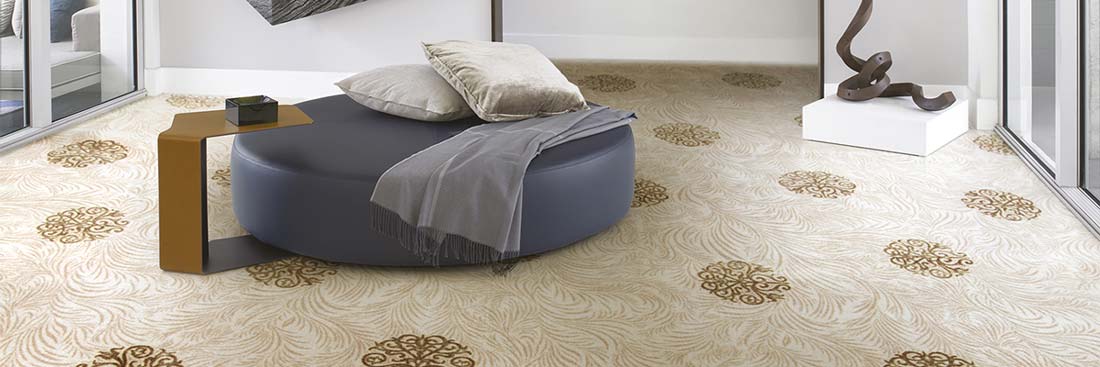
As mentioned in the article ‘Wall-to-wall Carpets: What You Should Know‘, Moquettes come in various types that are important to consider when purchasing this type of floor covering. Each type has its own advantages and disadvantages.
Types of Wall-to-wall Carpet
There are four common types of wall-to-wall carpet including needle-felt, tufted, carpet tiles and artificial grass which each one of these categories are divided into sub-categories. The manufacturing process, applications, pries and etc vary based on the type of carpet. In the following sections, we will delve into these types and their applications:
Needle-felt Carpet
Needle-felt wall-to-wall carpet, also known as Nonwoven carpet, is manufactured by processing raw felt. In this process, fibers are mechanically entangled using barbed needles, creating a dense and durable carpet without the need for traditional backing material. Unlike common rugs, needle-felt wall-to-wall carpets are based on fibers instead of yarn.
Nonwoven wall-to-wall carpets are often the most affordable type of moquettes, but this does not imply poor performance. In fact, this kind of flooring offers a wide range of applications at a reasonable price. For instance, if you are seeking a cost-effective wall-to-wall carpet with a long lifespan for your high-traffic office, needle-felt carpet is your best option as it suits both residential and commercial areas. Here are some Zarif Carpets’ nonwoven carpets:
Needle-felt carpets have four main types: printed, brocaded, embossed, and punched. Printed carpets feature an image or pattern printed onto the surface of the carpet (Image 1). Brocaded carpets are created by adding a pattern to the felt through a brocading process (Image 2). An embossed needle-felt carpet is crafted by heating and pressuring the felt to create a specific pattern (Image 3). Lastly, punched (or needle punched) carpets are similar to embossed carpets, but instead of using heat, they are crafted by applying pressure to the felt with a specific pattern (Image 4).
Nonwoven carpets are the oldest type of wall-to-wall carpet. Due to their high durability, resistance, long lifespan, and reasonable price, they are still considered a common flooring option. Despite these advantages, there are some disadvantages to note. Needle-felt carpets are hard and lack softness, so they may not provide the comfort when sitting or lying down. Additionally, nonwoven carpets may not completely prevent injuries to children when falling, thus offering less safety.
Tufted Carpet
Tufted carpet, also known as tufted pile carpet, is a type of fitted carpet woven by inserting yarn into a backing material. Unlike needle-felt carpet, which is based on fibers, tufted carpet is based on yarn. This process creates a soft, textured surface that is suitable for both residential and commercial spaces.
Tufted carpets have two three types: cut pile, loop pile and cut & loop pile. In the following two images, you can observe the structure of both loop and cut pile tufted carpets, gaining a clear understanding of the differences between these two primary subcategories of tufted wall-to-wall carpet:
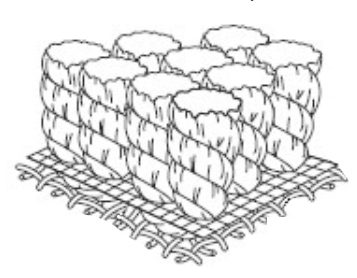
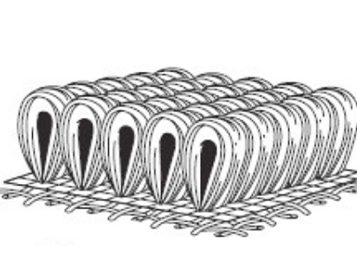
The following images showcase some of Zarif Carpets’ tufted pile carpets. Image 1 displays a cut pile carpet, which is a perfect choice for homes. Cut pile carpets provide softness, beauty, comfort, and safety. You can spend long hours on these carpets without feeling uncomfortable. Image 2 depicts a loop pile carpet, which is excellent for busy places with high foot traffic. Due to their structure, loop pile carpets are more resistant and have a longer lifespan in crowded areas like offices:
There are many factors influencing the quality of a tufted carpet, such as pile weight and height, raw material, gauge, and more. The quality should be measured considering the place where the carpet will be used. For example, if you intend to purchase a wall-to-wall carpet for your low-traffic house, you should consider buying a cut pile tufted carpet with a high pile height because higher pile height tends to provide greater comfort and softness in such settings. On the other hand, if you are looking for a carpet for a high-traffic commercial space, a loop pile tufted carpet with a higher pile density might be more suitable as it offers better durability and resilience against heavy foot traffic.
Alongside many advantages mentioned earlier, tufted carpets generally come with a higher price compared to needle-felt ones. This is because the manufacturing process of tufted carpets is more complex and involves a larger amount of materials.
Carpet Tiles
Carpet tiles, also known as modular carpet or carpet squares, are a type of flooring that consists of individual sections or tiles of carpeting. Unlike traditional wall-to-wall carpet rolls, carpet tiles are typically square-shaped and come in various sizes, commonly 50×50 cm per tile. As you may have noticed, carpet tiles are created by cutting a wall-to-wall carpet, which means they can be made from either a tufted or a needle-felt carpet. These pieces of carpet are then assembled in the target place. Here are some examples of Zarif Carpets’ tiles:
The primary advantage of carpet tiles is that if a part of the carpet is damaged, you would not need to replace the entire carpet; you only need to replace the damaged piece. This feature contributes to maintaining the flooring at a minimum cost. While there are many other advantages depending on the type of carpet tiles, it’s not necessary to mention them all, because, for example, loop pile carpet tiles are inheriting the advantages of loops. As with other quality products, the primary disadvantage is the price; carpet tiles often have a higher price than other types of wall-to-wall carpets.
Artificial Grass
Artificial grass, also known as synthetic turf or fake grass, is a man-made wall-to-wall carpet that closely resembles natural grass. It’s typically made from synthetic fibers such as polyethylene or polypropylene, which are designed to look and feel like real grass. Artificial grass is commonly used in landscaping, sports fields, and other outdoor areas where natural grass may be difficult to grow or maintain. Essentially, artificial grass is a form of tufted carpet, sharing the same structure, but with differences in the shape and color of the yarn.
Artificial grass beautifies outdoor spaces and brings the essence of nature into our homes without the need for real grass. If you’re considering purchasing fake grass, we recommend checking out our ‘Best Artificial Grass: 7 Key Features‘ article, where you’ll find the best characteristics of high-quality artificial grass. However, it’s important to note that the disadvantages of synthetic turf can vary depending on their quality. For example, some artificial grass can become incredibly hot in summer, making them uncomfortable to touch, let alone play football on!
Final Words
In recent years, wall-to-wall carpets have undergone significant improvements and changes, making it a bit confusing to choose the right one. We hope that reading this article will help you navigate through the options more effectively. Please do not hesitate to reach out if you have any questions, either via our available contacts or through our LinkedIn page.
You may be interested in:

